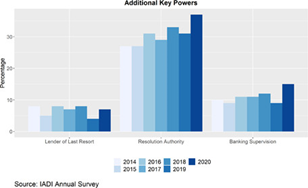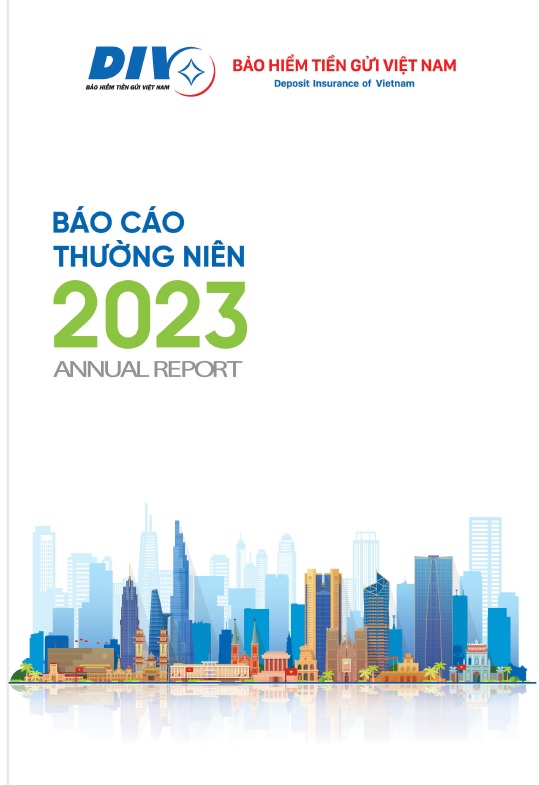The deposit insurance payout software system at DIV was designed and developed more than 10 years ago and has now revealed certain limitations. This leads to the immediate need to find temporary solutions that can meet data calculation and processing requirements in the new reality and enhance operational efficiency.
Data Analysis and Processing Tools as a Feasible Solution
Today, data analysis and processing have become increasingly familiar in modern life. With the rapid development of technology, data collection and processing have become crucial for businesses and organizations, and this trend is expected to continue to grow strongly in the future.
In essence, general data analysis and processing usually go through several steps such as data collection, data cleaning, data exploration, data analysis and processing, result reporting, and data storage. Additionally, key considerations include data integrity, reliability, timeliness/up-to-date status, and data management and security. Essentially, data processing in deposit insurance payout activities also follows these procedures and principles.
Currently, many software tools are available globally for data analysis and processing, such as R, Python, Excel, SAS, Power BI, Tableau, SPSS, etc. Each of these tools has its own characteristics, and some possess specific strengths. Therefore, users should select appropriate tools based on context, needs, and purposes.
Research has shown that current data processing tools are powerful, convenient, flexible, and supportive for users. Nowadays, users do not necessarily need in-depth expertise in programming, database design, or data science to effectively access and utilize these tools in their work. Therefore, the application of data processing tools in deposit insurance payout activities is entirely feasible. Moreover, their robust computing power and capacity to handle relatively large volumes of data, combined with their flexibility and user-friendliness, can help reduce complex steps and processes in large software systems—from data collection and intake to processing and generating the desired results or reports. As such, the application of data processing tools can improve efficiency and help shorten the time required for payout operations.
Applying Data Processing Tools in Deposit Insurance Payout Operations
Based on the potential for applying data processing tools in payout activities, the research team has piloted the use in simulating deposit insurance payouts for two main types of credit institutions (CIs) in Vietnam: people's credit funds (PCFs) and commercial banks (CBs).
PCFs are small credit institutions whose primary activities are receiving deposits and lending within a small locality (commune or inter-commune). As such, their customer base and total deposit balances are typically much smaller compared to those of CBs. The number of depositors at PCFs ranges from a few dozen to over 4,000, with 90% of PCFs having between 100 and 1,500 depositors. The number of deposit accounts often exceeds the number of depositors by a factor of 1.3 to more than 3 times, depending on the specific fund.
In contrast, CBs operate on a much larger and more complex scale, with branches across many provinces and cities nationwide. They serve millions of depositors with a vast number of deposit and loan accounts. Most Vietnamese CBs have from over 500,000 to nearly 18 million depositors, and these figures are expected to continue rising. Handling such large volumes of data presents challenges for DIV’s current payout software system, which was designed over a decade ago. Therefore, data processing for payouts in the context of CBs requires tools that are sufficiently powerful, flexible, user-friendly, and fit for purpose.
Some tools that can be applied for data processing in deposit insurance payouts include Python, R, Excel, and Power BI, among others. For the purposes of this study, we selected Excel, Power Query, and Power BI as they are sufficiently powerful, convenient, flexible, easy to learn and use, and well-integrated with Excel, making them suitable for our operational needs.
Data Processing During Payout Simulation at Commercial Banks
The payout simulation for a CB was carried out with a comprehensive scenario, including all procedures as prescribed by law and regulations and guidelines on payouts issued by DIV. The simulation was based on a medium-sized bank in Vietnam with over 1 million depositors and more than 3 million deposit accounts, along with other related data. At this data scale, using Excel alone would be very time-consuming. In such cases, applying a tool like Power BI for data processing and calculation is a highly feasible option.
Data processing tools in general—and Power BI in particular—offer core functionalities such as:
i) supporting data import/export in basic formats or allowing direct connection to existing databases;
ii) supporting data transformation and formatting as required;
iii) supporting data merging and splitting between tables to create new data tables for processing and calculations;
iv) supporting the creation of relationships and links between data tables for querying and computation, etc.
Thanks to these features, processing and calculating the payout amount for each depositor and generating related reports achieved positive results such as high accuracy, reduced calculation time, increased autonomy for operational staff, and decreased reliance on complex software systems.
Data Processing During Payout Simulation at People’s Credit Funds
For PCFs, data processing is significantly simpler than for CBs. In this case, the traditional features of Excel alone can suffice. However, Microsoft has recently enhanced Excel with new data processing features, notably Power Query. Power Query is designed to help users connect, extract, and transform data from various sources in a convenient, flexible, and visual way. Experiments have shown that combining traditional Excel tools (formulas, VBA, etc.) with Power Query yields high efficiency.
The results of applying data processing tools in the simulation of deposit insurance payouts demonstrate that these tools can be used to process and calculate data for both simulation and actual payouts. Having additional tools also enhances flexibility and autonomy in handling payout data. Moreover, data processing tools can be used in research to improve and upgrade the payout software and address other data-related issues. At the same time, studying and applying data processing tools help enhance the knowledge and skills of operational staff in handling data.
Conclusion
The rapid development of the banking sector today poses new challenges and demands related to data processing, requiring effective and appropriate solutions. In response to these practical needs, a wide range of solutions has emerged globally—from simple to complex and from massive technological systems to user-friendly tools for individuals.
For deposit insurance payouts, data processing is a core task. Therefore, in the near term, DIV can study and consider applying data processing tools to payout operations as a supplementary solution to enhance operational efficiency. In the long term, DIV needs to continue researching, improving, upgrading, and modifying the payout software system to fully and comprehensively meet the new demands outlined under the Deposit Insurance Development Strategy and adapt to reality.
Dr. Vu Van Long – Deputy General Director
Communication Department (Translation)



























